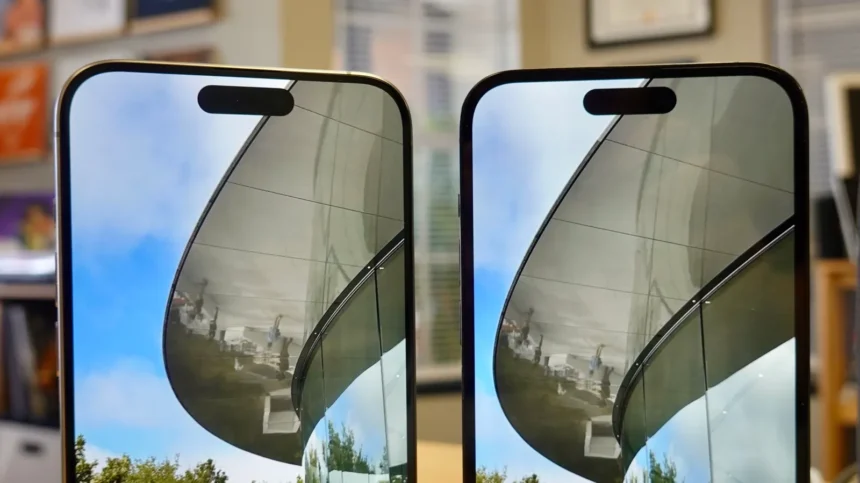The tech world is abuzz with the latest news about the upcoming iPhone 16, which is rumored to feature even thinner bezels. This development is attributed to the implementation of Border Reduction Structure (BRS) technology.
BRS technology allows for a more compact and efficient layout of the screen’s underlying circuitry. This results in slimmer bezels without compromising on the display’s performance or the device’s overall form factor. The technology requires advanced manufacturing techniques due to the complexity of tighter circuit placement and the need for bending some wiring downwards beneath the bezel.
The components at the heart of this manufacturing challenge are the Display Driver ICs (DDIs), which control the activation and illumination of pixels on the OLED panel. To meet Apple’s requirements, LG Display is diversifying its DDI supply chain, bringing on board Novatech from Taiwan alongside its existing supplier, LX Semicon.
It remains unclear whether the slimmer bezel technology will be featured in the standard iPhone 16 models, the iPhone 16 Pro and iPhone 16 Pro Max, or both. However, it is more likely to appear singularly in the iPhone 16 Pro models since these devices are expected to see display size increases from 6.1- to 6.3-inches and 6.7- to 6.9-inches, without a substantial increase in overall size.Apple reduced the bezels of the iPhone 15 Pro and iPhone 15 Pro Max last year significantly more than the iPhone 15 and iPhone 15 Plus. Last month, a report from Korea suggested that BIS technology will come to the entire iPhone 16 lineup.









